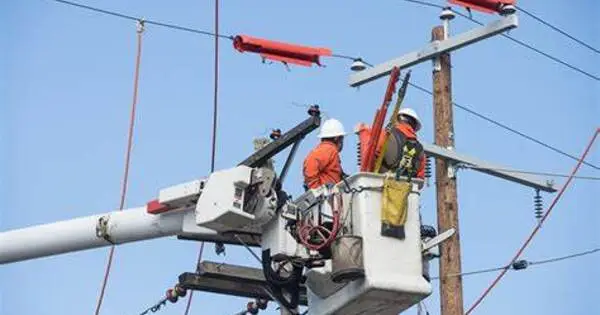Storm hardening is the process of making infrastructure, including buildings, utilities, and transportation networks, more resistant to the effects of extreme weather events, notably storms. It is the process of constructing new infrastructure or retrofitting existing infrastructure to make it more resilient to harsh weather occurrences. It “entails physically altering infrastructure to make it less vulnerable to harm from high winds, flooding, or flying debris.
Adopting new technology, installing new equipment, erecting protective barriers, or modifying the facility’s communications/IT can all be considered hardening measures. Buildings can be reinforced to withstand high winds, vital infrastructure can be elevated to minimize flooding, electrical lines can be buried to reduce outages from fallen trees, and drainage systems can be improved to manage heavy rainfall impacts.
Hardening typically needs a large expenditure from the energy firm. Some projects take years to complete; for example, massive earth-moving equipment may be required to construct a new levee. Sometimes the sheer scale of assets involved (for example, thousands of wooden distribution poles) necessitates years of focused effort to update.
Some common strategies for storm hardening include:
- Building Design: Constructing buildings with materials and designs that can withstand high winds, heavy rain, and flooding. This may involve reinforcing structures, using impact-resistant windows, and ensuring proper drainage systems.
- Vegetation Management: Regularly trimming trees and vegetation near power lines and infrastructure to reduce the risk of branches falling and causing damage during storms.
- Utility Infrastructure Upgrades: Strengthening power lines, substations, and other utility infrastructure to better withstand strong winds and flying debris.
- Flood Control Measures: Building levees, floodwalls, and storm surge barriers to protect coastal areas and low-lying regions from flooding.
- Emergency Preparedness: Developing and implementing emergency response plans, including evacuation routes, shelters, and communication systems, to ensure a coordinated response during storms.
- Public Education and Awareness: Educating residents and businesses about storm risks, preparedness measures, and evacuation procedures to minimize injuries and property damage.
- Insurance and Financial Protection: Encouraging property owners to invest in insurance policies that provide coverage for storm-related damage, and offering financial assistance or incentives for storm hardening measures.
Overall, storm hardening is critical for lowering communities’ vulnerability to the increasingly severe weather events caused by climate change, as well as maintaining the safety and resilience of infrastructure and residents in storm-prone areas.
Storm hardening has become increasingly significant as climate change causes more frequent and severe storms in various parts of the world. Communities can prevent storm-related damage and disruptions to key services such as electricity, water, and transportation by reinforcing infrastructure and enhancing preparedness. Storm hardening can also assist protect lives and property by strengthening buildings and infrastructure to withstand extreme weather events.
















